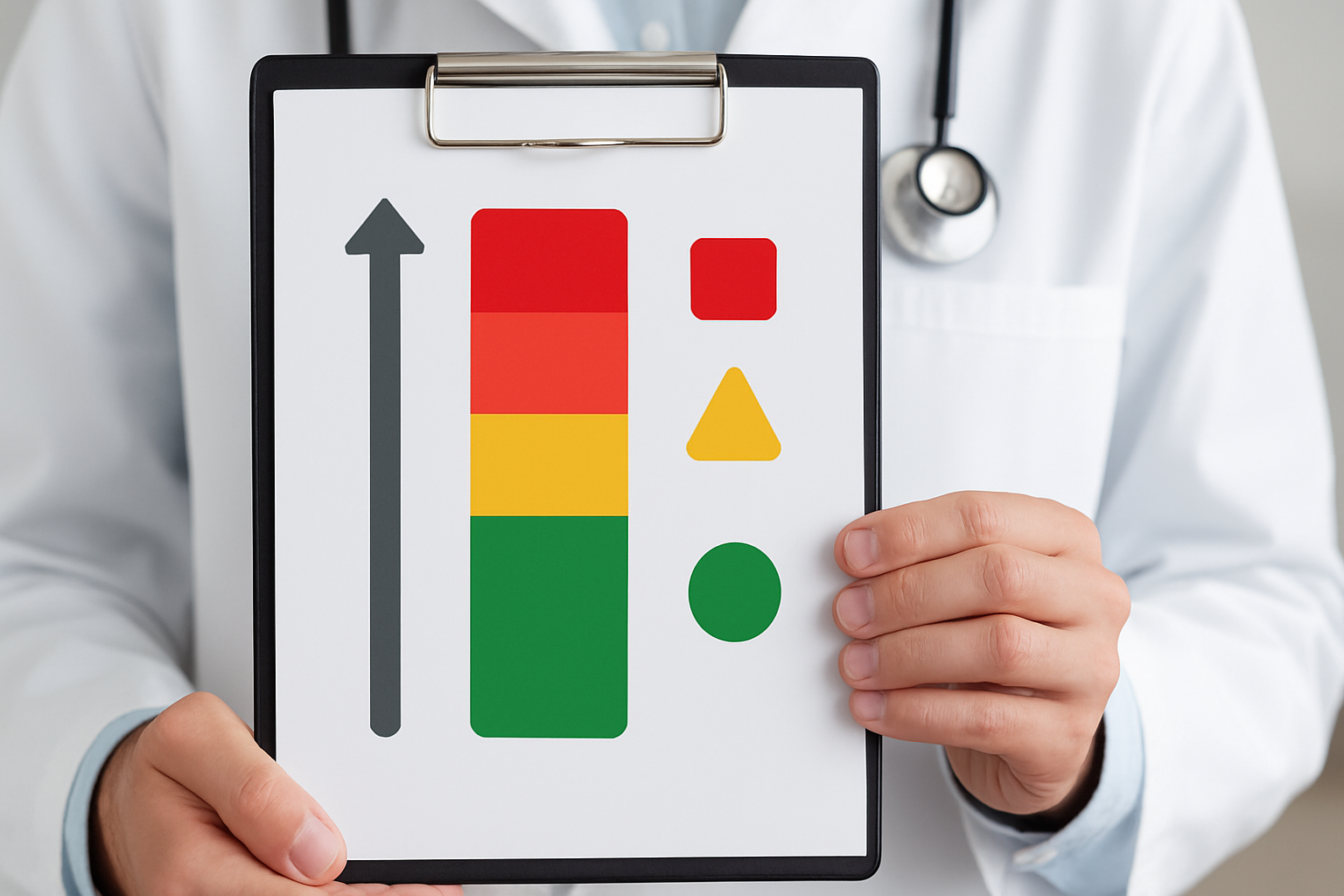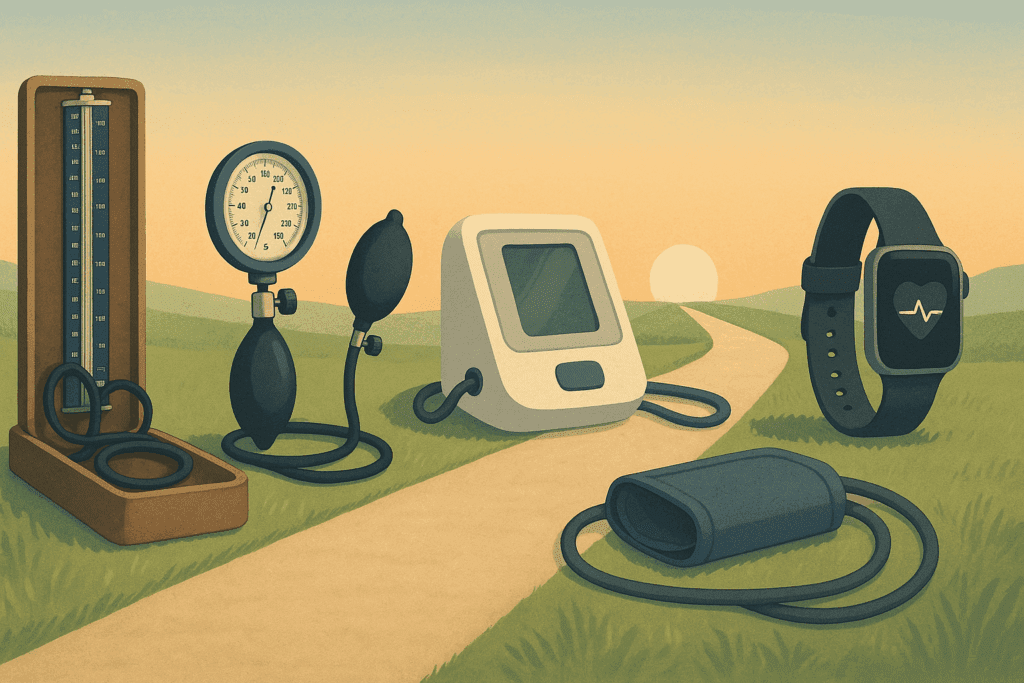Maintaining healthy blood pressure is one of the most fundamental aspects of cardiovascular wellness. Despite the growing awareness around hypertension and cardiovascular disease, many individuals remain unclear about what is truly considered optimal or “really good” blood pressure. Is 116/80 blood pressure ideal? What is the WNL (within normal limits) for blood pressure? How do these numbers change during physical activity or emotional stress? This article delves deeply into what constitutes normal pressure, how guidelines have evolved, and what those numbers really mean for your long-term heart health. By applying the principles of medical accuracy, experience, and trustworthiness (EEAT), we offer a comprehensive, science-backed understanding of blood pressure that goes far beyond the surface.
You may also like: Sudden Spikes in Blood Pressure: What Can Cause a Sudden Increase and When to Seek Medical Attention

The Basics of Blood Pressure: What the Numbers Mean
Blood pressure is typically represented by two numbers: systolic (the upper number) and diastolic (the lower number). Systolic pressure reflects the force of blood against artery walls when the heart contracts, while diastolic pressure represents that same force when the heart is at rest between beats. Understanding these figures is essential to gauging cardiovascular health. A reading of 116/80 blood pressure, for example, falls within the standard definition of normal pressure for many adults and is generally indicative of a heart that is pumping efficiently without placing undue stress on the arterial walls.
According to the American Heart Association (AHA), the optimal range for blood pressure is typically less than 120 mmHg systolic and less than 80 mmHg diastolic. When discussing what is really good blood pressure, a reading of 116/80 aligns well with the newer evidence-based guidelines. Not only is this reading below the threshold for hypertension, but it also reflects a balance that reduces strain on vital organs such as the kidneys, brain, and eyes. This is especially important when considering long-term health and reducing the risk of stroke, heart attack, or chronic kidney disease.

What Is the WNL for Blood Pressure? Clinical Standards and Considerations
The term “within normal limits,” or WNL, refers to values that are generally accepted by medical professionals as being within a safe and healthy range. For blood pressure, WNL typically means systolic readings between 90 and 120 mmHg and diastolic readings between 60 and 80 mmHg. These values are not arbitrary; they are based on decades of population studies, clinical trials, and epidemiological data that link blood pressure levels with cardiovascular outcomes.
Understanding what is the WNL for blood pressure can help patients and healthcare providers distinguish between optimal, borderline, and high-risk readings. For instance, a reading slightly above 120/80 may be categorized as elevated, which, while not yet classified as hypertension, could still pose long-term health risks if left unmanaged. On the other hand, very low blood pressure—often below 90/60—might also fall outside the WNL range and can lead to symptoms like dizziness, fatigue, and even fainting.
Therefore, while 116/80 blood pressure fits comfortably within the normal range, it is also important to consider individual factors such as age, gender, underlying health conditions, and medication use when interpreting whether a specific reading is truly ideal for a given individual. Health professionals often use the WNL framework as a starting point, but context and clinical judgment are critical for personalized care.

Exploring Normal Pressure: The Evolution of Guidelines and What They Mean Today
The concept of normal pressure has undergone significant evolution in recent decades. Historically, a blood pressure reading of 140/90 was considered the upper limit of normal. However, as more research uncovered the cumulative damage caused by prolonged exposure to even moderately elevated blood pressure, guidelines began to shift toward more stringent thresholds. Today, most health authorities define normal blood pressure as readings below 120/80 mmHg.
This change reflects a growing body of evidence suggesting that the lower the blood pressure within a healthy range, the better the protection against cardiovascular disease. That said, excessively low readings are not necessarily desirable and may indicate underlying health issues or overly aggressive treatment. The phrase “normal blood pressure new” refers to this updated understanding, emphasizing a proactive approach to blood pressure management that starts even before readings reach the hypertension threshold.
The shift in what is considered normal has significant implications for public health. By identifying elevated blood pressure earlier, healthcare providers can implement lifestyle modifications and, if necessary, pharmacological interventions to mitigate the progression to full-blown hypertension. This preventative approach aligns with current models of integrated care, where early detection and patient education are key components of long-term disease prevention.
Is 116/80 Blood Pressure Ideal? Clinical Insight and Real-World Context
Among the various readings that fall under the umbrella of normal pressure, 116/80 blood pressure stands out as particularly favorable. It strikes a balance between optimal systolic and diastolic values, providing a buffer zone that protects against both hypertension and hypotension. From a clinical standpoint, this reading is often associated with reduced arterial stiffness, better kidney perfusion, and a lower risk of developing complications such as left ventricular hypertrophy or retinal vascular damage.
However, interpreting 116/80 blood pressure as ideal must be contextualized. For young adults, athletes, or those with high cardiovascular fitness, slightly lower readings may be even more beneficial. On the other hand, in older populations or individuals with comorbidities like diabetes or chronic kidney disease, a reading like 116/80 may represent a significant achievement, particularly if they have a history of elevated levels.
It is also important to consider how stable this reading is across different conditions. For example, if a patient consistently maintains 116/80 blood pressure during periods of stress, physical activity, and rest, it suggests excellent autonomic regulation and cardiovascular resilience. Conversely, if such a reading is only observed in a clinical setting and is accompanied by higher values at home, this might indicate white coat hypertension or fluctuating blood pressure control.

Understanding Blood Pressure During Various Life Phases and Activities
Blood pressure is not a static measure; it fluctuates in response to a variety of internal and external stimuli. Factors such as stress, exercise, sleep, and even digestion can temporarily influence blood pressure readings. Understanding blood pressure during these different states can provide a more complete picture of cardiovascular health.
For instance, during moderate physical activity, it is normal for systolic pressure to rise while diastolic pressure remains relatively stable or even drops slightly. This is a healthy adaptive response that supports increased oxygen delivery to muscles. Blood pressure during exercise may spike well above the typical resting range, but it should return to baseline within a reasonable timeframe after activity ceases. If recovery is delayed, it could be a red flag for cardiovascular inefficiency or arterial stiffness.
Likewise, blood pressure during sleep tends to dip slightly, a phenomenon known as nocturnal dipping. This reduction is thought to give the cardiovascular system a chance to rest and recover. Individuals who do not experience this dip may be at higher risk for cardiovascular events, particularly if they also exhibit other markers of metabolic syndrome or chronic inflammation.
Tracking blood pressure during daily life—not just during isolated clinical visits—can help identify patterns that may otherwise go unnoticed. Wearable technology and ambulatory blood pressure monitoring devices are increasingly used to gather data in real-world settings, offering a more nuanced understanding of how blood pressure responds to lifestyle and environmental factors.
Why Monitoring Matters: The Link Between Normal Blood Pressure and Long-Term Health
Regular monitoring of blood pressure is crucial, even for individuals who consistently exhibit readings within the normal range. Maintaining a reading like 116/80 blood pressure over time is strongly associated with lower incidence of heart attack, stroke, and heart failure. It also correlates with preserved cognitive function, reduced risk of vascular dementia, and improved quality of life in older age.
Understanding what is really good blood pressure involves more than just achieving a target number—it requires a commitment to consistency. Blood pressure control is influenced by numerous factors including diet, physical activity, stress management, and medication adherence. Even short-term lapses in these areas can lead to fluctuations that, over time, contribute to cumulative vascular damage.
The predictive power of blood pressure monitoring also extends into areas like surgical outcomes and disease prognosis. Patients with well-controlled blood pressure tend to have better recovery rates and fewer complications from procedures ranging from minor outpatient interventions to major cardiac surgeries. In this context, knowing what is the WNL for blood pressure is not just a theoretical exercise—it has real-world implications for patient safety and healthcare costs.

Emerging Trends: Rethinking Normal Blood Pressure in the Modern Era
As medical technology and population health trends evolve, so too does our understanding of what constitutes normal blood pressure. The idea of “normal blood pressure new” reflects these ongoing shifts, including demographic-specific recommendations that account for age, race, and underlying health conditions. For example, some guidelines now recommend slightly higher targets for elderly patients to avoid complications related to overly aggressive blood pressure lowering.
Personalized medicine is also beginning to influence how we define and manage blood pressure. Genetic profiling, biomarker analysis, and machine learning algorithms are being employed to identify individuals at elevated risk even when their readings fall within conventional WNL ranges. This proactive approach aims to detect subclinical disease before it manifests as overt hypertension or cardiovascular events.
Moreover, wearable devices and digital health platforms are enabling continuous blood pressure monitoring in real-world conditions. These tools provide granular data on blood pressure during daily activities, enhancing the ability to detect abnormal patterns such as masked hypertension or exaggerated variability. As a result, the traditional model of blood pressure assessment—based on occasional in-office measurements—is being replaced by a more dynamic, data-driven framework.

The Role of Lifestyle in Sustaining Really Good Blood Pressure
Achieving and maintaining really good blood pressure is as much about lifestyle as it is about medical intervention. A diet rich in fruits, vegetables, lean proteins, and healthy fats has been consistently shown to support normal pressure. The DASH (Dietary Approaches to Stop Hypertension) diet, in particular, has been extensively validated as an effective strategy for blood pressure control.
Regular physical activity also plays a critical role. Aerobic exercise, strength training, and flexibility routines all contribute to improved vascular function, enhanced endothelial health, and better autonomic regulation. Even modest amounts of daily activity can lead to measurable improvements in blood pressure and overall cardiovascular resilience.
Stress management is another often overlooked yet vital component. Chronic stress triggers the release of hormones like cortisol and adrenaline, which can cause sustained elevations in blood pressure during waking hours and disrupt nocturnal dipping patterns. Techniques such as mindfulness meditation, yoga, and cognitive behavioral therapy have all been shown to lower blood pressure through various mechanisms, including reduced sympathetic nervous system activation and improved emotional regulation.
Sleep hygiene, alcohol moderation, and smoking cessation round out the core pillars of a heart-healthy lifestyle. These factors interact synergistically, reinforcing each other’s positive effects and helping to stabilize blood pressure across a wide range of scenarios. When combined with regular monitoring and periodic medical evaluations, lifestyle modifications provide a robust foundation for long-term cardiovascular health.
Frequently Asked Questions: Advanced Insights into Blood Pressure Health
1. Can lifestyle stressors cause significant fluctuations in blood pressure during a single day?
Yes, daily stressors—both physical and emotional—can contribute to noticeable changes in blood pressure during different moments of the day. For instance, traffic-related stress, work deadlines, or emotionally charged conversations may elevate systolic and diastolic values temporarily. These spikes may not be clinically dangerous on their own, but if experienced regularly, they can lead to cumulative vascular wear and tear. This is especially important for individuals who normally maintain what is really good blood pressure, such as a 116/80 blood pressure reading, but experience recurring elevations under stress. Monitoring blood pressure during various routine activities can help distinguish transient stress responses from more persistent patterns that warrant intervention.
2. Is 116/80 blood pressure considered good for older adults or only for younger populations?
Contrary to the belief that older adults need higher blood pressure to maintain adequate perfusion, 116/80 blood pressure is actually quite favorable even in aging populations—if achieved naturally and without excessive medication. Age-related arterial stiffness can make it more difficult to maintain this level, but achieving it through healthy lifestyle choices reflects excellent vascular integrity. For seniors, keeping blood pressure within what is the WNL for blood pressure—without inducing dizziness or frailty—is key. That said, overtreatment to force blood pressure down to this level can be problematic, which is why individualized targets are essential. Still, maintaining this range as part of a comprehensive aging-well strategy aligns with what is really good blood pressure in terms of minimizing cardiovascular risk.
3. How does sleep quality influence blood pressure during nighttime hours?
Sleep plays a pivotal role in cardiovascular health, particularly in the regulation of blood pressure during rest. Normally, blood pressure dips by 10% to 20% at night—a phenomenon known as nocturnal dipping. Lack of this dip may signal underlying issues like sleep apnea, chronic stress, or overactivation of the sympathetic nervous system. People who sustain normal pressure throughout both waking and sleeping hours tend to have better heart health outcomes over time. Investing in high-quality sleep can enhance the body’s ability to stabilize 116/80 blood pressure consistently across the circadian rhythm, promoting vascular repair and hormonal balance overnight.
4. Are there gender-specific considerations in determining what is really good blood pressure?
Yes, gender plays a nuanced role in how we evaluate blood pressure health. While the threshold for what is the WNL for blood pressure generally remains consistent across genders, hormonal fluctuations—particularly during menstruation, pregnancy, and menopause—can affect blood pressure regulation. Women are more prone to isolated diastolic hypertension in midlife and may see greater variability in blood pressure during hormonal transitions. Conversely, younger men may exhibit higher systolic pressures due to greater cardiac output. In both cases, achieving stable readings like 116/80 blood pressure reflects a well-regulated cardiovascular system and aligns with modern interpretations of normal pressure across genders.
5. What role does hydration play in maintaining normal blood pressure during physical activity?
Hydration is crucial for stabilizing blood pressure during exercise and other forms of physical exertion. When the body is dehydrated, blood volume decreases, which may cause a compensatory rise in heart rate and vasoconstriction, sometimes leading to an elevated systolic reading. Adequate hydration supports consistent cardiac output, improves blood vessel flexibility, and enhances temperature regulation, all of which contribute to sustaining what is really good blood pressure during movement. For active individuals, being properly hydrated can help them maintain a blood pressure reading closer to 116/80, even in physically demanding conditions. Thus, staying well-hydrated should be a foundational component of any blood pressure management strategy.
6. How do socioeconomic and environmental factors impact one’s ability to maintain normal pressure?
Social determinants of health—such as access to nutritious food, healthcare, safe housing, and stress-reducing recreational spaces—can significantly influence one’s ability to achieve or sustain normal pressure. Research has shown that individuals living in high-stress or underserved environments are more likely to develop hypertension earlier in life. Even when clinical targets like 116/80 blood pressure are attained, maintaining them can be more difficult without supportive infrastructure. Understanding these dynamics is essential for public health interventions aimed at promoting what is really good blood pressure across diverse communities. More equitable policies could lead to broader achievement of the WNL for blood pressure across populations.
7. How can someone differentiate between healthy fluctuations and concerning variability in blood pressure during the day?
Natural blood pressure variability is expected throughout the day, especially in response to posture changes, meals, and activity levels. However, extreme swings—such as systolic values rising above 160 or dropping below 90—may suggest underlying autonomic dysfunction or medication mismanagement. One way to evaluate this is through ambulatory blood pressure monitoring, which captures a 24-hour profile, including blood pressure during sleep and waking hours. A consistent return to readings like 116/80 blood pressure after such fluctuations generally indicates good regulation. Patterns where values remain outside the WNL for blood pressure across multiple time points, however, may need clinical investigation.
8. Are there technological tools that can help maintain awareness of blood pressure during daily routines?
Yes, recent innovations in wearable technology and smart health monitoring have made it easier to track blood pressure during various aspects of daily life. Some wrist-worn devices now provide near-clinical accuracy for continuous blood pressure monitoring, helping users observe patterns and respond to early signs of hypertension or hypotension. These tools are especially useful for assessing how well one maintains 116/80 blood pressure during physical exertion, sleep, or high-stress situations. The collected data can be shared with healthcare providers for personalized recommendations based on real-world readings rather than isolated office visits. These developments support a more dynamic understanding of what is really good blood pressure and help users stay within the range of normal blood pressure new standards.
9. Can psychological resilience influence blood pressure outcomes over the long term?
Emerging research suggests that psychological traits like optimism, emotional regulation, and resilience play a critical role in long-term blood pressure stability. These factors can buffer the physiological impacts of chronic stress, promoting hormonal balance and healthier autonomic responses. Individuals with high psychological resilience often demonstrate better recovery of blood pressure during emotional distress and physical challenges. As a result, they are more likely to sustain normal pressure or maintain values close to 116/80 blood pressure across diverse life contexts. Encouraging the development of psychological coping skills may thus be a valuable tool in achieving what is really good blood pressure and enhancing cardiovascular longevity.
10. How might future medical practices redefine the criteria for normal blood pressure new benchmarks?
As precision medicine continues to advance, future definitions of normal blood pressure new standards may become increasingly individualized. Genetic profiling, microbiome analysis, and real-time biomarker feedback could help predict ideal blood pressure targets based on one’s unique physiology rather than relying solely on population averages. These tools could identify people for whom 116/80 blood pressure is ideal versus those who require slightly higher or lower baselines for optimal health. Furthermore, integration of machine learning into clinical decision-making may offer predictive analytics to forecast blood pressure trends based on lifestyle data. Such innovation promises a more personalized and nuanced understanding of what is really good blood pressure, setting the stage for proactive and preventive care at scale.
Conclusion: Why Knowing Your Blood Pressure Matters More Than Ever
In a world increasingly focused on preventive health, understanding what is really good blood pressure is more important than ever. A reading like 116/80 blood pressure offers a benchmark for optimal cardiovascular function, falling well within the WNL for blood pressure and reflecting a balance that supports organ health, mental clarity, and longevity. Yet this number is not just a static goal—it is part of a dynamic physiological system that responds to lifestyle, environment, and individual health status.
Modern insights into blood pressure during various states—be it physical exertion, emotional stress, or sleep—underscore the importance of contextualizing these readings within the broader scope of daily life. The concept of normal pressure is evolving, with new technologies and personalized medicine strategies reshaping how we interpret and manage this vital sign. The term “normal blood pressure new” aptly captures this shift, highlighting the need for continuous reassessment and individualized care.
Ultimately, the goal is not simply to hit a numerical target, but to foster a lifestyle and healthcare strategy that sustains that target over time. Whether through diet, exercise, stress management, or medical therapy, the path to really good blood pressure is multifaceted—and deeply worth pursuing. By embracing this comprehensive approach, we not only protect our hearts but also enhance our overall quality of life, one beat at a time.
optimal blood pressure range, cardiovascular health tips, healthy heart metrics, ideal blood pressure levels, understanding systolic and diastolic, heart-healthy lifestyle habits, vascular health indicators, controlling high blood pressure naturally, daily blood pressure patterns, aging and blood pressure, nighttime blood pressure trends, exercise and blood pressure effects, wearable health monitors, blood pressure and mental health, personalized blood pressure management, preventing hypertension risks, low blood pressure concerns, blood pressure recovery time, sleep and cardiovascular function, modern blood pressure tracking tools
Further Reading:
What is a healthy blood pressure?


